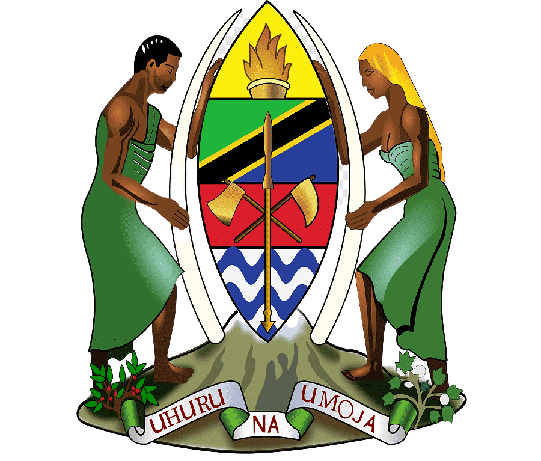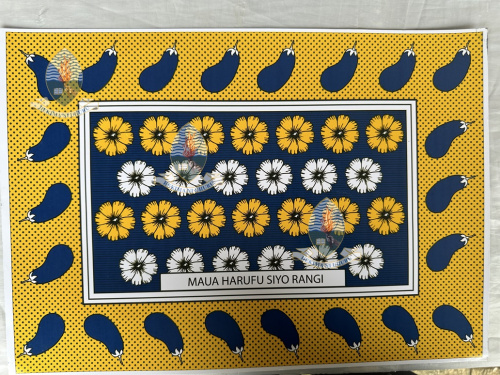Art and Design students leverage cultural artifacts to take Khanga and Kitenge tapestry to next level
In a captivating fusion of creativity and cultural heritage, third-year students from the Department of Creative Arts of the University of Dar es Salaam's College of Humanities (CoHU) have reinvented remarkable Tanzania textile designs of popular African fabrics, Khanga and Kitenge.
Through their project titled "Creative Khanga and Kitenge Designs: Cultural and Historical Motifs of Arusha and Morogoro regions in Tanzania”, under the supervision of Dr. Dinnah Enock and Mr. Bryan Rugangira, the Art and Design students have delved into the rich tapestry of East African textiles, focusing on the vibrant narratives of the Arusha and Morogoro regions.
Prof. Rose Upor, Principal of the College of Humanities, highlighted the significance of such initiatives in preserving cultural heritage. "These designs not only showcase the artistic talents of our students but also serve as cultural testaments, preserving and celebrating our rich heritage for generations to come”.
Prof. Upor said that the project's success underscored the pivotal role of arts and design in preserving and promoting cultural heritage, amplifying Tanzania's narrative through the global language of creativity and innovation.
Meanwhile, Ms. Sabra Saleh Khalfan, one of the students involved in the project, underscored that working on the project was not only a creative endeavour but also a journey of cultural discovery. “We aimed to blend traditional motifs with modern design elements to showcase the beauty and significance of our cultural heritage”.
She explained that, under the guidance of their mentors, the students underwent a three-week practical training programme at textile mills in the respective regions. One group visited Sunflag Mill in Arusha, while another group explored the 21st Century Mill in Morogoro.
“This hands-on experience in motif design and full design production was integral to understanding the intricate process of creating khanga and kitenge fabrics”, she said.
Dr. Dinnah Enock, who supervised the students said that the project was a testament of the students' dedication and creativity. “They meticulously collected cultural and historical artifacts, translating them into stunning designs that capture the essence of Arusha and Morogoro”.
She further said that “the research methodology encompassed data collection through observation and unstructured interviews with local designers and vendors. Cultural objects reflecting the regions' narratives were carefully analyzed, leading to the creation of 75 unique khanga and kitenge designs intricately woven with historical and cultural motifs”.
Dr. Enock elaborated that the designs incorporated symbols such as Maasai cultural elements from Arusha and Luguru drums representing Morogoro's heritage. Text phrases like ‘Kilimo chetu Nguzo yetu’ (Our agriculture, our pillar) and ‘Uhuru ni asili yangu’ (Freedom is my nature) resonated with the regions' cultural ethos, offering a nuanced narrative through fabric artistry.
Reflecting on customer insights, the project identified key preferences such as colour and pattern choices while also addressing challenges such as market limitations and competition from imported fabrics. However, the project's expected outcomes are promising, with 50% of designs anticipated to attract interest from industries for expanded manufacturing.
This groundbreaking project, supported by the University of Dar es Salaam, not only empowers local talent but also fosters a deeper appreciation for indigenous textiles. The collaboration with Sunflag and 21st Century Mills underscores industry-academia partnerships crucial for practical skill development.


